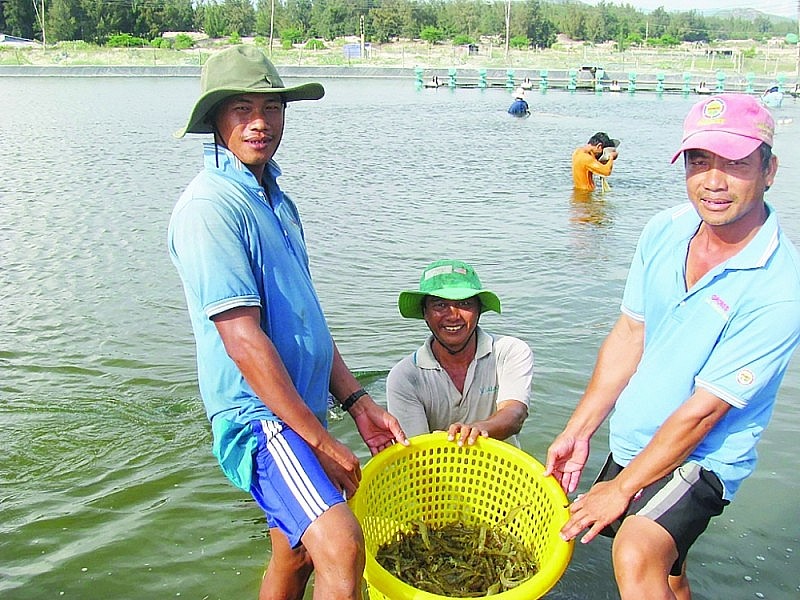 News
News
TRADE 04/03/2023 15:23 Follow Congthuong.vn on
| Shrimp exports to South Korea increased by 33%In November 2022, shrimp exports to China increased by 88% |
In 2023, although it is forecasted that it will continue to face many difficulties, but based on the analysis of advantages, opportunities and challenges, the shrimp industry in the whole country still sets a target of 750,000 ha of shrimp farming area. shrimp production of over 1 million tons (of which black tiger shrimp 280,000 tons, whiteleg shrimp 750,000 tons, the rest are giant freshwater shrimp and other shrimp) and export turnover of over 4.3 billion USD.
Although many positive results have been achieved, according to many experts, Vietnam's shrimp industry will face many difficulties in 2023. Speaking at the 2023 Shrimp Industry Development Conference on March 3, Mr. Truong Dinh Hoe, General Secretary of the Vietnam Association of Seafood Exporters and Producers (VASEP), shrimp exports in 2022 reached a record level thanks to pillow orders from 2021 due to the suspension of Covid-19 and shrimp prices. increase, great efforts of enterprises in the context of many difficulties. Vietnam's shrimp exports in 2022 to 108 markets, instead of 103 markets as in 2021, of which exports to 9 main markets account for more than 97% of the total value.
Shrimp exports in 2023 of our country will have to compete more strongly with shrimp from Ecuador and India. Besides, the price of imported shrimp in the world market has gradually decreased since the second half of 2022 and is expected to continue to decrease when the global supply increases to about 6 million tons. Meanwhile, the domestic price of raw shrimp tends to increase, making it difficult to mobilize raw materials for export processing.
At the same time, with a large inventory, US shrimp imports cannot recover in the first half of 2023. Demand will still focus more on small size shrimp, the advantage is in favor of Ecuador because of the abundant supply of shrimp. and the advantage of geographical location.
"In addition, shrimp exports in 2023 will be very difficult because the world's supply is increasing and prices tend to decrease. From that, it is forecast that market demand will recover from the second quarter of 2023 in the price trend. lower than 2022", said Mr. Hoe.
 |
| Export turnover in 2022, reaching 4.3 billion USD, this is also the record growth ever. Photo: N.Thanh |
Many experts also said that shrimp production costs are still higher than in other countries in the region. The reason is that shrimp feed still accounts for a high proportion of the production cost (about over 65% of the cost of industrial shrimp farming). In addition, the cost of seed is high due to the import of broodstock, most of the infrastructure in the farming area is not guaranteed. Water sources are easily polluted due to production and living processes, pesticides from agricultural production. The production and sale of floating, un-quarantined shrimp seed is still quite common in some localities, affecting the quality of shrimp farming, etc. are also the reasons why Vietnam's shrimp industry will face many difficulties this year. 2023.
In order for shrimp farming results and export turnover to reach the set plan, according to Deputy Minister of Agriculture and Rural Development Phung Duc Tien, businesses need to diversify processed products, especially deep processing, processing value-added products in line with consumer demand in the new situation. Develop plans and prepare conditions for proactive production in difficult conditions such as drought, salinity intrusion, environmental fluctuations that lead to disease outbreaks, plus rising input prices. ; improve product quality; cooperate and link production in chains to reduce intermediaries, reduce production costs, and improve product quality; apply farming methods certified by VietGAP, GlobalGAP, ASC...
Localities need to organize linkages between localities participating in the shrimp chain, ensuring the continuous operation of the shrimp production chain. Timely prevent products such as seeds, aqua feeds, and products for treating the aquaculture environment that do not meet quality standards to consumers.